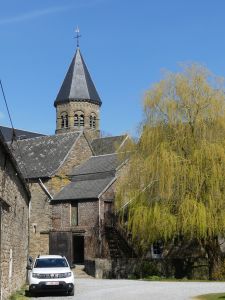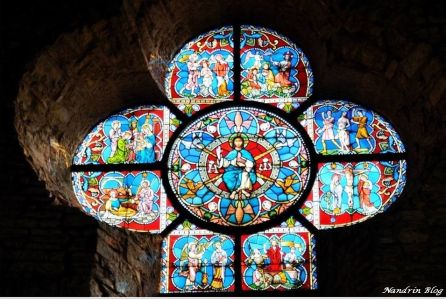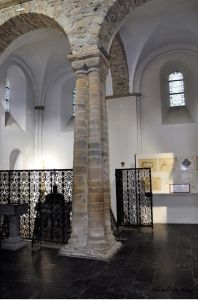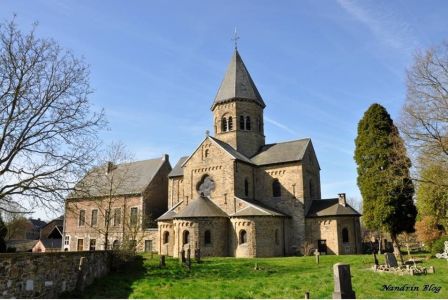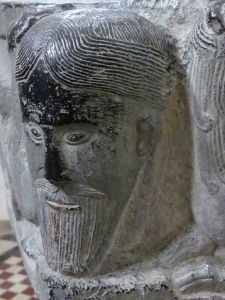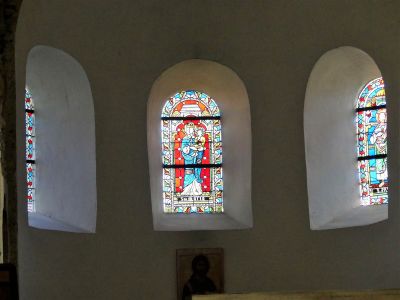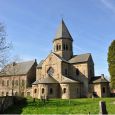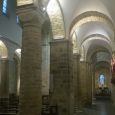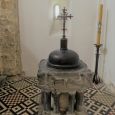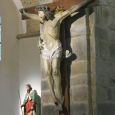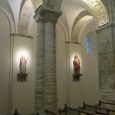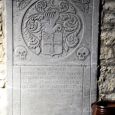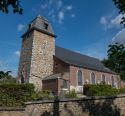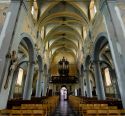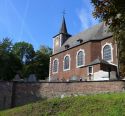Church | XII | Romanesque | Catholic Church



Map
Opening hours
01 April - 31 October
Mon 8.00 - 18.00
Tue 8.00 - 18.00
Wed 8.00 - 18.00
Thu 8.00 - 18.00
Fri 8.00 - 18.00
Sat 8.00 - 18.00
Sun 8.00 - 18.00
01 November - 31 March
Mon 8.00 - 17.00
Tue 8.00 - 17.00
Wed 8.00 - 17.00
Thu 8.00 - 17.00
Fri 8.00 - 17.00
Sat 8.00 - 17.00
Sun 8.00 - 17.00
Description
The church of Saints Peter and Paul in the village of Saint-Séverin, however, has a very special place there.
In a well-chosen site, slightly overhanging the pretty village square, this very beautiful 12th century church is a former priory of the Abbey of Cluny and the only witness of Cluny influenced architecture in our regions. With its harmonious and peaceful forms, its typical octagonal bell tower, it is a jewel that is well worth the detour. Feel free to admire it from different points of view.
Let's go inside.
As soon as you walk through the doors you are struck by the size and beauty, by the unity and simplicity of the whole, by the "warmth" of the material extracted from the quarries of the region.
This church differs from other Romanesque churches in the country beause of several particularities:
1°) the central and octagonal bell tower on the crossing, pierced with twin bays; 2°) its orientation with the heart facing east; 3°) the vaulting of the side naves; 4°) the alternation of pillars and columns of the central nave ; 5°) the curved and cruciform type of these columns; 6°) the apse very low in relation to the heart; 7°) the side chapels with apsidioles, running along the choir and communicating with it; 8°) the geminated and spiral columns above the pillars of the central nave.
Several sculptures decorate the side naves, three of which are old (15th and 16th century, right nave) as well as a terracotta panel illustrating words from Christ (Jean Rocour † 2005).
A beautiful 16th century Christ on the cross made by Master Balthazar can be seen in the central nave.
Magnificent baptismal fonts in Meuse limestone, also from the 12th century, rare in their kind, are also worth admiring. Sculpted in a monolith, its corner figures are of Syrian inspiration.
Several ancient tombstones are embedded in the walls; others are visible in the adjacent old cemetery.
The building finally has beautiful acoustics - it regularly hosts concerts.
The adjacent presbytery, a former claustrine house, dates back to the 16th century, under the episcopate and on the initiative of Erard de la Mark (cannot be visited).
KIKIRPA : Photo-library online
Guided tour of the church (FR)
Photos
Remarkable elements
External views
Let's first admire the exterior of this beautiful 12th century Romanesque church, the only example of the Cluniac style in Belgium,
- By the opening of the porch of the former priory farm: go up the Engihoul street for 20 meters.
- From the village square: view of the church on its hillock with its elegant octagonal bell tower pierced by twin windows and with the old cemetery on its left.
- From the "Vôye di mèsse" (the path of the masses): take the rue de l'Eglise along the wall of the cemetery up to the first path on your right. From this place you have a beautiful view of the presbytery garden, the pond and the back of the building.
Inside the building
One is immediately struck by the breadth, balance, simplicity and warmth of the ensemble illuminated by the cloverleaf-shaped stained glass window above the choir (Joseph Osterrath workshops, 1906) and the three coloured stained glass windows at the back of the apse.
The large nave is separated from the side naves (beautiful vaults) by square pillars alternating with weak pillars, columns or bundles of 4 engaged columns arranged in different directions. This brings lightness to the whole.
Curious twisted twin columns adorn and extend the strong pillars.
Baptismal fonts (12th century)
Very original, they date from the 2nd half of the 12th century in limestone from the Meuse. Unique, it is supported by 13 supports: a central shaft surrounded by 12 small columns. Square monolithic tank (the hollowed part affects the shape of a half-sphere). Exterior decorated with sculptures of Syrian inspiration: on each side, two lions cornered; at the corners, bearded human heads, probably representing the four rivers of paradise. One of them is crowned.
The Lid is made of copperware (17th century) with the original cross, stolen, replaced by a cross dating from before 1895.
Christ in cross (16th century)
In the center of the great nave, a Christ all in oak, work by the Liège sculptor Maître Balthazar and painted by "Maître Lambert" (Lombard?), painter of the Prince-Bishop's palace under Erard de la Marck.
Notice the heavy crown of thorns and the loincloth waving in the wind. It belongs to the late Gothic period; the flying garment marks the transition to the Renaissance.
Ancient statues (15th and 16th c.)
In the right side nave, you will notice 3 statues:
- Saint Catherine of Alexandria (wood, 16th century): The bearded emperor, crowned and carrying a scepter, is defeated (sword) by the science (book) of the saint, the sword still recalls the decapitation of the martyrdom.
- St. John the Evangelist (wood, 15th century): wavy hair that resembles the previous one. His gesture of blessing brings out of the cup (in the form of a winged dragon) the deadly poison intended for him.
- Sainte-Barbe (wood, 16th century) : recognizable by its tower with 3 windows and the palm of martyrdom.
Tombstones
- That of the "Reverend Jean Magonet, who was the parish priest of this place for 27 years and died on January 8, 1714". (left transept)
- That of a certain Pirlot, alderman of Huy, from 1508, a coat of arms in the centre and at the four corners, inscription in Gothic characters. (left transept, opposite the previous one).
- The oldest one, dated 1300 (MCCC, in the upper right corner), is that of a certain Marie (Maroie), wife of Henry de Vill...? (right transept, under a Christ on the cross)
- The most recent (only in Latin) is that of the Reverend Jean-Henri Gérardi, parish priest of Saint-Séverin for 48 years, who died on 24 August 1790 (right nave, near the transept).





